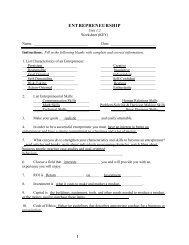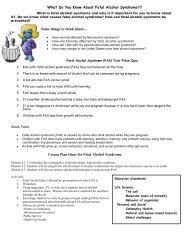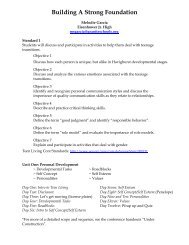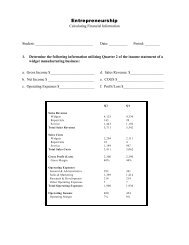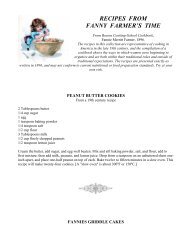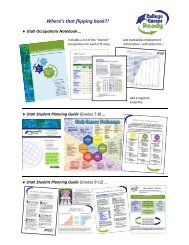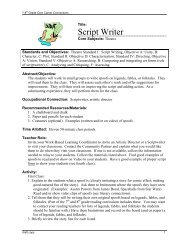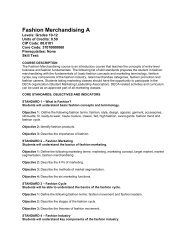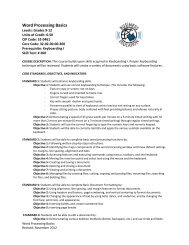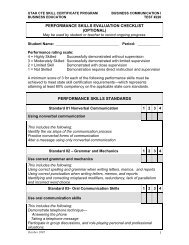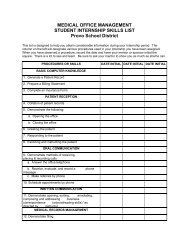Improvisational Actor/Actress
Improvisational Actor/Actress
Improvisational Actor/Actress
You also want an ePaper? Increase the reach of your titles
YUMPU automatically turns print PDFs into web optimized ePapers that Google loves.
7-8 th Grade Core Career Connections<br />
5. Students in 8 th grade Language Arts are required to demonstrate speaking competency.<br />
Included in that demonstration must be the use of tone, pitch, pace, voice, body language,<br />
and audience.<br />
6. The use of improv games will help students to learn these speech conventions. The<br />
desired aim of this activity is to transfer skills learned and gained in improv games to<br />
students public speaking.<br />
Pre-Activity:<br />
1. As an introduction to speech skills use Houghton Mifflin Writer’s Inc., A Student<br />
Handbook for Writing and Learning. Sections 514-543 explain the process of preparing<br />
and presenting a speech.<br />
2. Show clips of “Whose Line is it Anyway?”–be certain that these clips are age appropriate.<br />
Not absolutely necessary to lesson plan, just some fun.<br />
3. Play numbers 11 and 13 from the CD from Off Broadway Theatre “Quick Wits.” Again,<br />
not absolutely necessary to lesson plan. Address to obtain CD is included with lesson<br />
plan.<br />
4. Improv group to perform and explain games and how these games would relate to public<br />
speaking. Some specific games to play to teach tone, pitch, pace, voice, body language,<br />
and audience would be Accents, Action Figures, Emotions, and Faces. Other games may<br />
be selected by the improv group to demonstrate these skills.<br />
5. If the improv group cannot visit school the Language Arts teacher, perhaps in conjunction<br />
with the Drama teacher, could easily explain and demonstrate these games. The Drama<br />
classes might want to learn these games and perform for the 8 th grade students if the<br />
improv group could not visit the school. A copy of the games is included with lesson<br />
plan.<br />
Activity:<br />
1. Break class into groups of 2-3 to practice the improv games modeled.<br />
2. Each group performs for class one improv game, game chosen by class/ teacher. Again be<br />
certain to chose games like Accents, Action Figure, Emotions, and Faces as these games<br />
may be some of the best to teach tone, pitch, pace, voice, body language, and audience.<br />
3. Ask each group after their performance to offer feedback on how they did. Discuss what<br />
they would change or how they could do better. How do these games display the<br />
conventions of tone, pitch, pace, voice, body language, and audience necessary in public<br />
speaking? How are they going to use these techniques in their literary speech, or any<br />
public speech? Also elicit feedback from peers and teacher for each group. Sample<br />
rubric included in lesson plan.<br />
Suggested Assessment:<br />
Verbal critique after each group performance as well as rubric critique of each group.<br />
Work-based Learning, Community Connection:<br />
An improvisational actress/actor from a local theatre or comedy club, whose skills would be<br />
used in demonstrating and teaching improv techniques. Community partner will visit<br />
classrooms/schools to introduce and perform improv games. .<br />
draft copy 2






